Induction of labour at or near term for suspected fetal macrosomia
- PMID: 27208913
- PMCID: PMC7032677
- DOI: 10.1002/14651858.CD000938.pub2
Induction of labour at or near term for suspected fetal macrosomia
Update in
-
Induction of labour at or near term for suspected fetal macrosomia.Cochrane Database Syst Rev. 2023 Mar 8;3(3):CD000938. doi: 10.1002/14651858.CD000938.pub3. Cochrane Database Syst Rev. 2023. PMID: 36884238 Free PMC article.
Abstract
Editorial note: It has been brought to the authors' attention that there may be an error in the data (Analysis 1.9). This is currently under investigation, and a correction will be made if the data are found to be incorrect. Details can be found in the comments.
Background: Women with a suspected large-for-dates fetus or a fetus with suspected macrosomia (birthweight greater than 4000 g) are at risk of operative birth or caesarean section. The baby is also at increased risk of shoulder dystocia and trauma, in particular fractures and brachial plexus injury. Induction of labour may reduce these risks by decreasing the birthweight, but may also lead to longer labours and an increased risk of caesarean section.
Objectives: To assess the effects of a policy of labour induction at or shortly before term (37 to 40 weeks) for suspected fetal macrosomia on the way of giving birth and maternal or perinatal morbidity.
Search methods: We searched the Cochrane Pregnancy and Childbirth Group's Trials Register (31 January 2016), contacted trial authors and searched reference lists of retrieved studies.
Selection criteria: Randomised trials of induction of labour for suspected fetal macrosomia.
Data collection and analysis: Review authors independently assessed trials for inclusion and risk of bias, extracted data and checked them for accuracy. We contacted study authors for additional information. For key outcomes the quality of the evidence was assessed using the GRADE approach.
Main results: We included four trials, involving 1190 women. It was not possible to blind women and staff to the intervention, but for other 'Risk of bias' domains these studies were assessed as being at low or unclear risk of bias.Compared to expectant management, there was no clear effect of induction of labour for suspected macrosomia on the risk of caesarean section (risk ratio (RR) 0.91, 95% confidence interval (CI) 0.76 to 1.09; 1190 women; four trials, moderate-quality evidence) or instrumental delivery (RR 0.86, 95% CI 0.65 to 1.13; 1190 women; four trials, low-quality evidence). Shoulder dystocia (RR 0.60, 95% CI 0.37 to 0.98; 1190 women; four trials, moderate-quality evidence), and fracture (any) (RR 0.20, 95% CI 0.05 to 0.79; 1190 women; four studies, high-quality evidence) were reduced in the induction of labour group. There were no clear differences between groups for brachial plexus injury (two events were reported in the control group in one trial, low-quality evidence). There was no strong evidence of any difference between groups for measures of neonatal asphyxia; low five-minute infant Apgar scores (less than seven) or low arterial cord blood pH (RR 1.51, 95% CI 0.25 to 9.02; 858 infants; two trials, low-quality evidence; and, RR 1.01, 95% CI 0.46 to 2.22; 818 infants; one trial, moderate-quality evidence, respectively). Mean birthweight was lower in the induction group, but there was considerable heterogeneity between studies for this outcome (mean difference (MD) -178.03 g, 95% CI -315.26 to -40.81; 1190 infants; four studies; I(2) = 89%). In one study with data for 818 women, third- and fourth-degree perineal tears were increased in the induction group (RR 3.70, 95% CI 1.04 to 13.17).For outcomes assessed using GRADE, we based our downgrading decisions on high risk of bias from lack of blinding and imprecision of effect estimates.
Authors' conclusions: Induction of labour for suspected fetal macrosomia has not been shown to alter the risk of brachial plexus injury, but the power of the included studies to show a difference for such a rare event is limited. Also antenatal estimates of fetal weight are often inaccurate so many women may be worried unnecessarily, and many inductions may not be needed. Nevertheless, induction of labour for suspected fetal macrosomia results in a lower mean birthweight, and fewer birth fractures and shoulder dystocia. The unexpected observation in the induction group of increased perineal damage, and the plausible, but of uncertain significance, observation of increased use of phototherapy, both in the largest trial, should also be kept in mind.Findings from trials included in the review suggest that to prevent one fracture it would be necessary to induce labour in 60 women. Since induction of labour does not appear to alter the rate of caesarean delivery or instrumental delivery, it is likely to be popular with many women. In settings where obstetricians can be reasonably confident about their scan assessment of fetal weight, the advantages and disadvantages of induction at or near term for fetuses suspected of being macrosomic should be discussed with parents.Although some parents and doctors may feel the evidence already justifies induction, others may justifiably disagree. Further trials of induction shortly before term for suspected fetal macrosomia are needed. Such trials should concentrate on refining the optimum gestation of induction, and improving the accuracy of the diagnosis of macrosomia.
Conflict of interest statement
Two of authors (MB and OI) are on one of the included trials (Boulvain 2015) and a third (JT) on another (LIBBY 1998). They were not involved in carrying out data extraction or assessing risk of bias for their own trials. Data extraction and assessment of risk of bias was for these trials was carried out by Leanne Jones and Therese Dowswell, Research Associates in the Cochrane Pregnancy and Childbirth Group.
Michel Boulvain was an invited speaker at a DIP congress on gestational diabetes and received accommodation expenses.
Therese Dowswell is employed by the University of Liverpool on an NIHR Cochrane Programme Grant (13/89/05) to work on a range of Cochrane Reviews. In the past 3 years her institution has received a grant from WHO to support her working on other Cochrane reviews. The Funders have no influence on the content or conclusions of the relevant Cochrane reviews.
Olivier Irion receives salary support from the University Hospitals of Geneva and the University of Geneva. He has received money to provide expert (extra‐) judiciary reports unrelated to this review. He has also been refunded for travel and meetings fees by his institution and the Swiss Ob‐Gyn society and received payment from the University of Geneva for teaching (around 6 hours per year) on courses provided to the Geneva Midwives school.
Figures

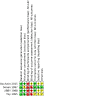
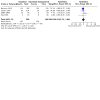
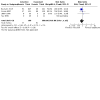
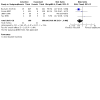
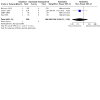
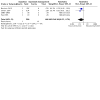
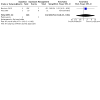
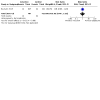
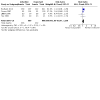
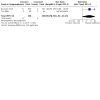
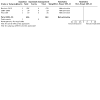

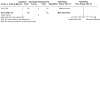
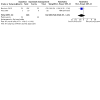
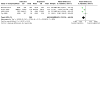
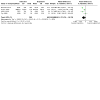
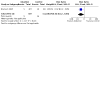
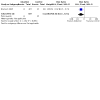
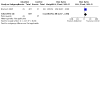

Update of
-
Induction of labour for suspected fetal macrosomia.Cochrane Database Syst Rev. 2000;(2):CD000938. doi: 10.1002/14651858.CD000938. Cochrane Database Syst Rev. 2000. Update in: Cochrane Database Syst Rev. 2016 May 22;(5):CD000938. doi: 10.1002/14651858.CD000938.pub2. PMID: 10796221 Updated.
Comment in
-
Induction of labour for suspected fetal macrosomia, Boulvain et al (2016).Pract Midwife. 2016 Jul-Aug;19(7):33. Pract Midwife. 2016. PMID: 27652444 No abstract available.
-
Reflections on the review.Pract Midwife. 2016 Jul-Aug;19(7):34-5. Pract Midwife. 2016. PMID: 27652445 No abstract available.
References
References to studies included in this review
Boulvain 2015 {published and unpublished data}
-
- Boulvain M, Senat MV, Perrotin F, Winer N, Beucher G, Subtil D, et al. Induction of labour versus expectant management for large-for-date fetuses: a randomised controlled trial. Lancet 2015;385(9987):2600-5. - PubMed
-
- Boulvain M, Senat MV, Rozenberg P, Irion O. Induction of labor or expectant management for large-for-dates fetuses: a randomized controlled trial. American Journal of Obstetrics and Gynecology 2012;206(Suppl 1):S2.
-
- Boulvain M. Induce or wait for estimated macrosomia (DAME). Personal communication 2002.
-
- Rozenberg P. DAME: induction of labor or waiting for suspicion fetal macrosomia. ClinicalTrials.gov (http://clinicaltrials.gov/) [21 March 2006] 2006.
Gonen 1997 {published and unpublished data}
-
- Gonen O, Rosen DJD, Dolfin Z, Kaneti HY, Katzenstein M, Regev R, et al. Induction of labor versus expectant management in macrosomia: a prospective randomized study. In: Proceedings of 14th European Congress of Perinatal Medicine; 1994 June 5-8; Helsinki, Finland. 1994:374.
-
- Gonen O, Rosen DJD, Dolfin Z, Tepper R, Markov S, Fejgin MD. Induction of labor versus expectant management in macrosomia: a randomized study. Obstetrics & Gynecology 1997;89:913-7. - PubMed
LIBBY 1998 {unpublished data only}ISRCTN98146741
-
- Kean LH. Leave alone or induce for the big baby (LIBBY). National Research Register. www.update-software.com/NRR (accessed 10 September 2000).
-
- Thornton J. Unpublished data of the LIBBY pilot (as supplied October 2006). Data on file.
Tey 1995 {published and unpublished data}
-
- Tey A, Eriksen NL, Blanco JD. A prospective randomized trial of induction versus expectant management in nondiabetic pregnancies with fetal macrosomia [abstract]. American Journal of Obstetrics and Gynecology 1995;172:293.
References to ongoing studies
Perlitz 2014 {published data only}
-
- Perlitz Y. Induction of labor versus expectant management of large for gestational age/macrosomic babies at term. a multi-center randomized trial. ClinicalTrials.gov (http://clinicaltrials.gov/) [accessed 25 February 2016] 2014.
Additional references
Berard 1998
-
- Berard J, Dufour P, Vinatier D, Subtil D, Vanderstichele S, Monnier JC, et al. Fetal macrosomia: risk factors and outcome. A study of the outcome concerning 100 cases >4500 g. European Journal of Obstetrics, Gynecology, & Reproductive Biology 1998;77(1):51-9. - PubMed
Cameron 2014
-
- Cameron CM, Shibl R, McClure RJ, Ng SK, Hills AP. Maternal pregravid body mass index and child hospital admissions in the first 5 years of life: results from an Australian birth cohort. International Journal of Obesity 2014;38(10):1268-74. - PubMed
Chatfield 2001
-
- Chatfield J. ACOG issues guidelines on fetal macrosomia. American College of Obstetricians and Gynecologists. American Family Physician 2001;64(1):169-70. - PubMed
Chitty 1994
Coomarasamy 2005
-
- Coomarasamy A, Connock M, Thornton JG, Khan KS. Accuracy of ultrasound biometry in the prediction of macrosomia: a systematic quantitative review. BJOG: an international journal of obstetrics and gynaecology 2005;112(11):1461-6. - PubMed
Delpapa 1991
-
- Delpapa EH, Muller-Heubach E. Pregnancy outcome following ultrasound diagnosis of macrosomia. Obstetrics & Gynecology 1991;78:340-3. - PubMed
Friesen 1995
-
- Friesen CD, Miller AN, Rayburn WF. Influence of spontaneous or induced labor on delivering the macrosomic fetus. American Journal of Perinatology 1995;12:63-6. - PubMed
Gaudet 2014
-
- Gaudet L, Wen SW, Walker M. The combined effect of maternal obesity and fetal macrosomia on pregnancy outcomes. Journal of Obstetrics & Gynaecology Canada: JOGC 2014;36(9):776-84. - PubMed
Higgins 2011
-
- Higgins JPT, Green S, editors. Cochrane Handbook for Systematic Reviews of Interventions Version 5.1.0 [updated March 2011]. The Cochrane Collaboration, 2011. Available from www.cochrane-handbook.org.
Johnstone 1997
-
- Johnstone FD. Prediction of macrosomia in diabetic pregnancy. Contemporary Reviews in Obstetrics and Gynaecology 1997;2:113-20.
Ju 2009
-
- Ju H, Chadha Y, Donovan T, O'Rourke P. Fetal macrosomia and pregnancy outcomes. Australian & New Zealand Journal of Obstetrics & Gynaecology 2009;49(5):504-9. - PubMed
Malin 2016
-
- Malin GL, Bugg GJ, Takwoingi Y, Thornton JG, Jones NW. Antenatal magnetic resonance imaging versus ultrasound for predicting neonatal macrosomia: a systematic review and meta-analysis. BJOG: an international journal of obstetrics and gynaecology 2016;123(1):77-88. - PubMed
Mishanina 2014
Mohammadbeigi 2013
Perlow 1996
-
- Perlow JH, Wigton T, Hart J, Strassner HT, Nageotte MP, Wolk BM. Birth trauma: a five-year review of incidence and associated perinatal factors. Journal of Reproductive Medicine 1996;41:754-60. - PubMed
RevMan 2014 [Computer program]
-
- The Nordic Cochrane Centre, The Cochrane Collaboration Review Manager (RevMan). Version 5.3. Copenhagen: The Nordic Cochrane Centre, The Cochrane Collaboration, 2014.
Saccone 2015
-
- Saccone G, Berghella V. Induction of labor at full term in uncomplicated singleton gestations: a systematic review and metaanalysis of randomized controlled trials. American Journal of Obstetrics and Gynecology 2015;213(5):629-36. - PubMed
Sanchez‐Ramos 2002
-
- Sanchez-Ramos L, Bernstein S, Kaunitz AM. Expectant management versus labor induction for suspected fetal macrosomia: a systematic review. Obstetrics and Gynecology 2002;100(5 Pt 1):997-1002. [PMID: ] - PubMed
Thiery 1989
-
- Thiery M, Baines CJ, Keirse MJNC. The development of methods for inducing labour. In: Chalmers I, Enkin MW, Keirse MJNC, editors(s). Effective Care in Pregnancy and Childbirth. Oxford: Oxford University Press, 1989:969.
Weeks 1995
-
- Weeks JW, Pitman T, Spinnato JA. Fetal macrosomia: does antenatal prediction affect delivery route and birth outcomes? American Journal of Obstetrics and Gynecology 1995;173:1215-9. - PubMed
Wood 2014
-
- Wood S, Cooper S, Ross S. Does induction of labour increase the risk of caesarean section? A systematic review and meta-analysis of trials in women with intact membranes. BJOG: an international journal of obstetrics and gynaecology 2014;121(6):674-85. - PubMed
Publication types
MeSH terms
Grants and funding
LinkOut - more resources
Full Text Sources
Other Literature Sources

